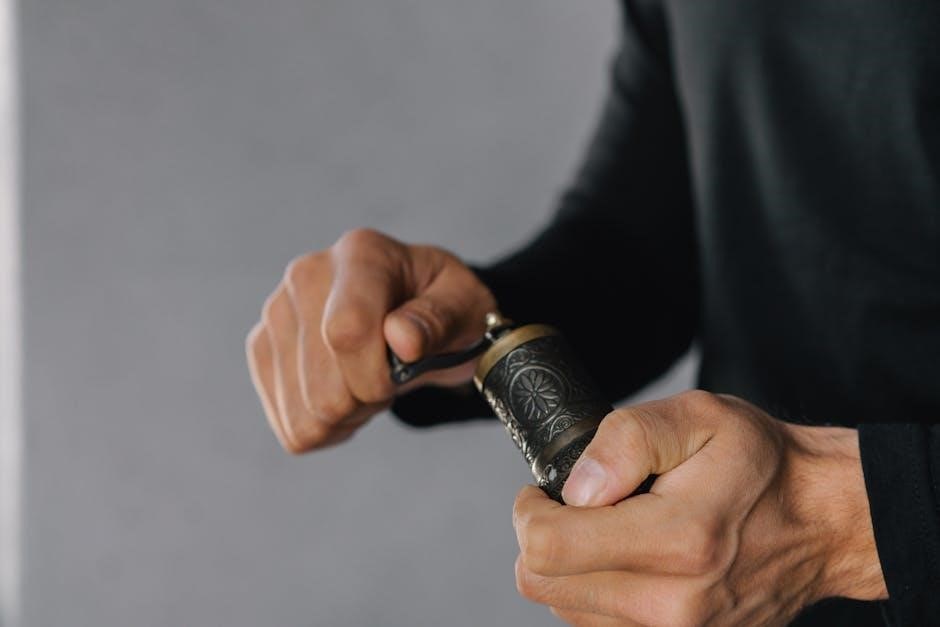What is a Vintage Manual Coffee Grinder?
A vintage manual coffee grinder is a hand-operated device from a bygone era, used to grind coffee beans. These grinders offer a connection to coffee history with their captivating aesthetics. These were crafted from materials like wood and cast iron.
The History of Manual Coffee Grinders
The history of manual coffee grinders is rich, dating back to the 15th century, with antique examples still coveted by collectors today. These grinders represent a historical piece of coffee gear, often evoking a sense of nostalgia and a connection to traditional coffee brewing methods. Early models were simple in design, built for functionality and durability.
The evolution of manual coffee grinders reflects advancements in materials and craftsmanship. From wooden bases with dovetail joints to cast iron bodies, each grinder tells a story of its time. Some vintage grinders even feature markings indicating their manufacturer and approximate date of production. These grinders offer a glimpse into the past, showcasing how coffee preparation has evolved over the centuries.
The Franco-Prussian War of 1870-1871 influenced European history, indirectly impacting the production and trade of coffee and related tools. Despite the advent of electric grinders, vintage manual models retain their charm, appreciated for their aesthetics and the unique experience they provide. Many enthusiasts value the connection to coffee history that these grinders represent.
Identifying Antique vs. Vintage Coffee Grinders
Distinguishing between antique and vintage coffee grinders involves considering their age and characteristics. Antique coffee grinders are typically over 100 years old, while vintage grinders are generally from the mid-20th century or earlier. Examining the materials and construction techniques can offer clues about a grinder’s age.
Antique grinders often exhibit unique craftsmanship, such as hand-cut dovetail joints in wooden components or intricate cast iron designs. Look for signs of wear and patina, which can indicate age and use. Markings or labels from the manufacturer can provide valuable information about the grinder’s origins and era.
Vintage grinders may feature more modern materials and manufacturing processes, but they still retain a sense of historical charm. Consider the overall design and style, as well as any distinctive features that might help narrow down the grinder’s age. Remember that antique coffee grinders might be better suited as ornaments rather than for daily use, due to their age and potential wear.
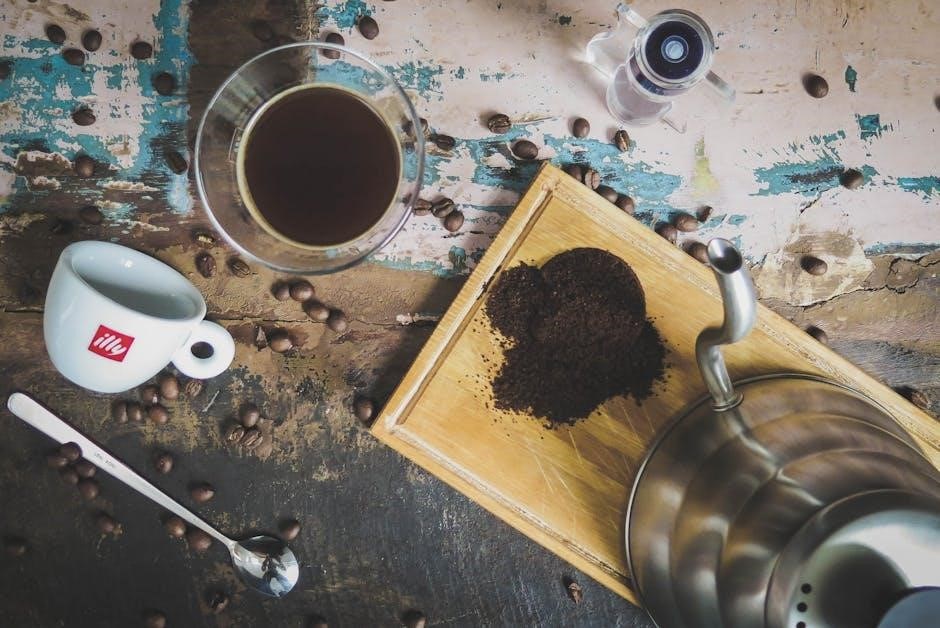
Materials Used in Vintage Coffee Grinders
Vintage coffee grinders were crafted using a variety of materials, each contributing to their unique aesthetic and functionality. Common materials include cast iron for durability, wood for the body and handle, and brass accents. These materials showcase the craftsmanship of the era.
Cast Iron
Cast iron played a pivotal role in the construction of many vintage manual coffee grinders, offering unparalleled durability and longevity. This robust material was frequently employed for the grinder’s body, providing a solid and stable base for grinding coffee beans. The inherent weight of cast iron also contributed to the grinder’s stability during operation, minimizing movement and ensuring a consistent grind.
Vintage coffee grinders with cast iron bodies are highly sought after by collectors and enthusiasts due to their ability to withstand the test of time. Unlike grinders made from more fragile materials, cast iron grinders can endure decades of use without succumbing to wear and tear. This durability makes them ideal for daily use, allowing users to enjoy freshly ground coffee for years to come.
Furthermore, the rustic aesthetic of cast iron adds to the charm and appeal of vintage coffee grinders. The natural patina that develops on the surface of cast iron over time enhances its character, lending a sense of history and authenticity to the piece. Whether displayed as a decorative item or used for its intended purpose, a cast iron coffee grinder is a testament to the enduring quality of vintage craftsmanship.
Wood
Wood was a commonly used material in the construction of vintage manual coffee grinders, adding a touch of elegance and warmth to their design. Often used for the base, handle, or outer casing, wood provided a comfortable grip and a visually appealing aesthetic. The type of wood used varied depending on the era and region, with hardwoods like oak, walnut, and maple being popular choices due to their durability and attractive grain patterns.
The wooden components of vintage coffee grinders were often meticulously crafted, showcasing the skill and artistry of the artisans who made them. Dovetail joints, intricate carvings, and smooth finishes were common features, reflecting the attention to detail that characterized vintage craftsmanship. The use of wood also allowed for greater design flexibility, enabling manufacturers to create a wide range of styles and shapes.
While wood is not as durable as cast iron, it offers a unique tactile experience and a natural beauty that enhances the overall appeal of vintage coffee grinders. However, it’s important to note that wooden grinders may require more careful maintenance to prevent damage from moisture or wear.
Brass and Other Metals
Brass and other metals, such as copper and tin, played a significant role in the construction of vintage manual coffee grinders. Brass, with its attractive golden hue and resistance to corrosion, was often used for decorative elements, hoppers, and even the grinding mechanism itself. The use of brass added a touch of elegance and sophistication to these functional objects, elevating them beyond mere tools.
Other metals, like copper and tin, were sometimes employed for specific components, such as the inner lining of the hopper or the grinding burrs. Copper’s excellent thermal conductivity made it ideal for dissipating heat during the grinding process, while tin’s malleability allowed it to be easily shaped into intricate forms.
The combination of different metals in vintage coffee grinders not only enhanced their aesthetic appeal but also contributed to their durability and functionality. The use of corrosion-resistant materials ensured that these grinders could withstand the test of time, while the careful selection of metals for specific components optimized their performance.
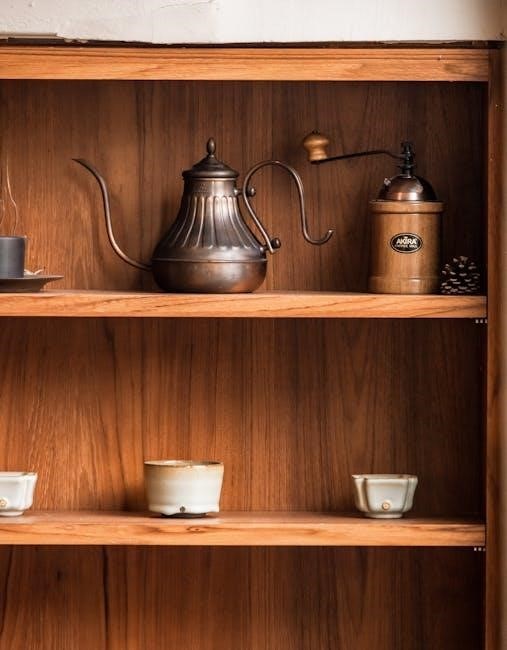
Types of Vintage Manual Coffee Grinders
Vintage manual coffee grinders come in various forms, each reflecting different design aesthetics and functional features. Wall-mounted grinders were a common sight in kitchens, offering convenience and space-saving design. These often featured a cast iron body with a wooden hopper and a collection cup at the bottom.
Lap grinders, designed to be held between the knees while grinding, provided portability and were popular for home use. These typically had a smaller capacity and a simpler construction.
Coffee mills with drawers were another popular type, featuring a built-in drawer to collect the ground coffee. These were often made of wood and had a more decorative appearance, making them a stylish addition to any kitchen.
Turkish coffee grinders, known for their ornate brass construction and adjustable grinding mechanism, were specifically designed for grinding coffee beans to a fine powder for Turkish coffee.
Using a Vintage Manual Coffee Grinder
Using a vintage manual coffee grinder is a tactile experience that connects you to the history of coffee brewing. First, ensure the grinder is clean and free of any debris. Open the hopper and add your coffee beans. The amount will depend on the size of your grinder and the amount of coffee you wish to brew.
Next, secure the grinder. If it’s a wall-mounted model, it should already be firmly in place. For lap grinders or those with a base, hold it steady or place it on a stable surface.
Begin turning the hand crank in a consistent, steady motion. You’ll feel the beans being crushed between the burrs. Adjust the grind setting, if possible, to achieve your desired consistency. Finer grinds are suitable for Turkish coffee or espresso, while coarser grinds are better for French press or drip coffee.
Continue grinding until all the beans have been processed. Collect the ground coffee from the drawer or receptacle and enjoy the aroma of freshly ground beans.
Cleaning and Maintaining a Vintage Coffee Grinder
Maintaining your vintage coffee grinder is crucial for its longevity and optimal performance. Regular cleaning prevents the buildup of coffee oils and residue, which can affect the flavor of your brew. Start by disassembling the grinder as much as possible. Remove the hopper, grinding burrs, and collection drawer.
Use a brush to remove loose grounds from all parts. For a deeper clean, hand wash the components with mild soap and warm water. Avoid harsh chemicals or abrasive cleaners, as they can damage the finish or materials. Ensure all parts are thoroughly dried before reassembling. Moisture can cause rust or corrosion, especially in cast iron models.
Occasionally, you may need to clean the grinding burrs more thoroughly. A stiff brush or even a toothbrush can help remove stubborn residue. Some people use coffee grinder cleaning tablets or rice to help absorb oils and freshen the burrs. If your grinder has wooden parts, avoid soaking them in water. Instead, wipe them down with a damp cloth and a wood-friendly cleaner.
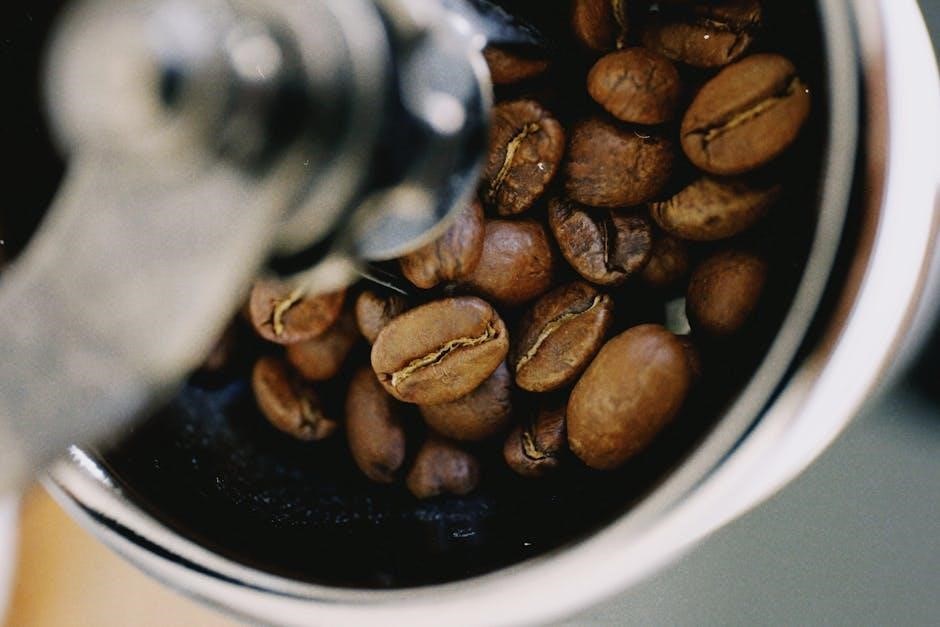
Vintage Coffee Grinder as Decoration
Beyond their functionality, vintage coffee grinders make charming decorative pieces, adding a touch of nostalgia to any space. Their unique designs and aged patinas bring character to kitchens, dining rooms, or even living areas. A vintage grinder can be displayed on a shelf, countertop, or mantel, serving as a conversation starter and a reminder of simpler times.
Consider using a vintage coffee grinder as part of a larger vignette. Group it with other antique kitchen tools, coffee beans, or vintage cups and saucers to create a cohesive and visually appealing display. The combination of textures and materials, such as wood, metal, and ceramic, adds depth and interest to your décor.
You can also repurpose a vintage grinder into a unique planter or a small storage container. The possibilities are endless, limited only by your creativity. Whether you’re a coffee enthusiast or simply appreciate vintage aesthetics, a vintage coffee grinder can be a delightful addition to your home.
Where to Find Vintage Manual Coffee Grinders
The quest for a vintage manual coffee grinder can be an exciting treasure hunt. Start your search at local antique stores and flea markets, where you might stumble upon a hidden gem among various vintage wares. These venues often offer a diverse selection of grinders, each with its unique history and charm.
Online marketplaces like eBay and Etsy are also excellent resources for finding vintage coffee grinders. These platforms host a wide array of sellers offering antique and vintage items, making it easy to browse and compare different models from the comfort of your home. Be sure to carefully review the seller’s descriptions and photos to assess the condition and authenticity of the grinder before making a purchase.
Garage sales and estate sales can also yield fruitful results. Keep an eye out for these events in your local community, as they often feature vintage items at affordable prices. Remember to thoroughly inspect any grinder you find, checking for signs of damage or wear.
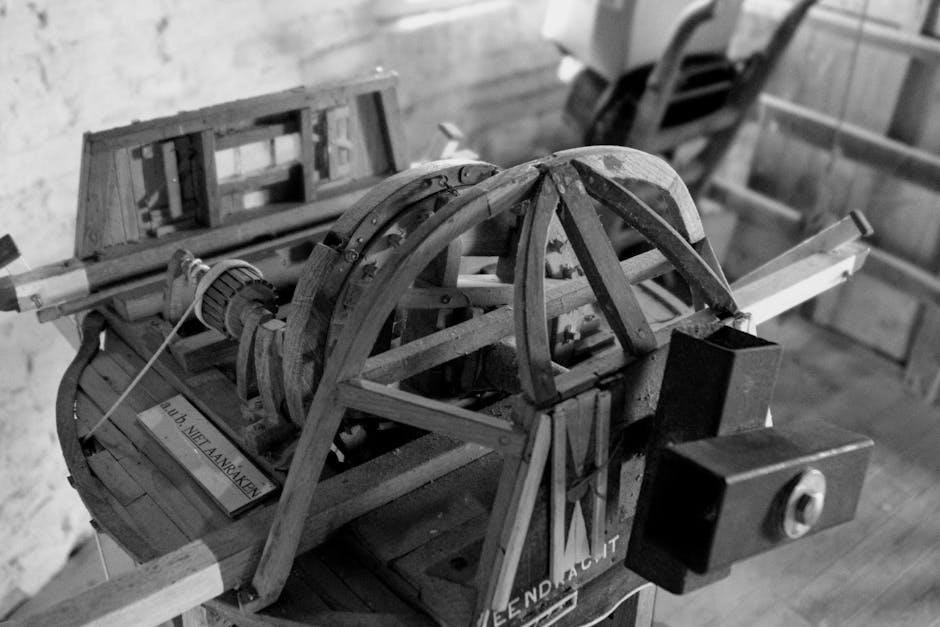
Value and Collectibility of Vintage Coffee Grinders
The value and collectibility of vintage coffee grinders are influenced by several factors, including age, rarity, condition, and brand. Antique grinders from the 19th century, especially those in excellent condition, tend to command higher prices among collectors. Rarity also plays a significant role; grinders with unique designs or limited production runs are generally more valuable.
The condition of the grinder is crucial. Grinders with original parts and minimal wear are more desirable. However, a well-preserved patina can enhance the charm and value of a vintage piece. Certain brands, like Peugeot, are particularly sought after due to their history and craftsmanship.
Researching the specific model and its historical context can help determine its potential value. Online marketplaces and antique guides provide valuable information for assessing the worth of your vintage coffee grinder. Remember, the emotional value and personal connection to the item can also contribute to its overall worth.
